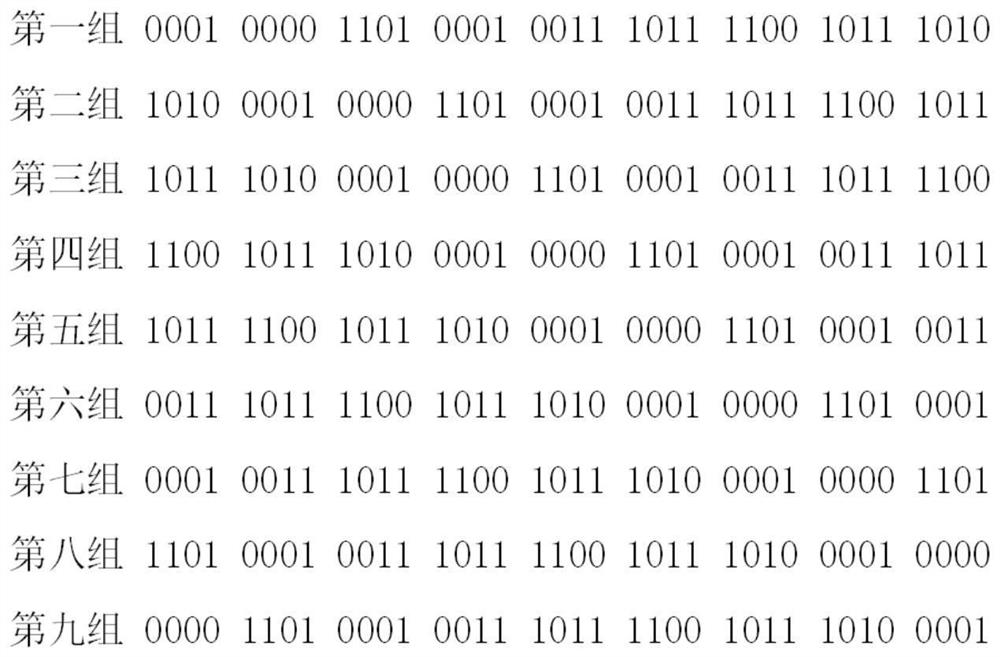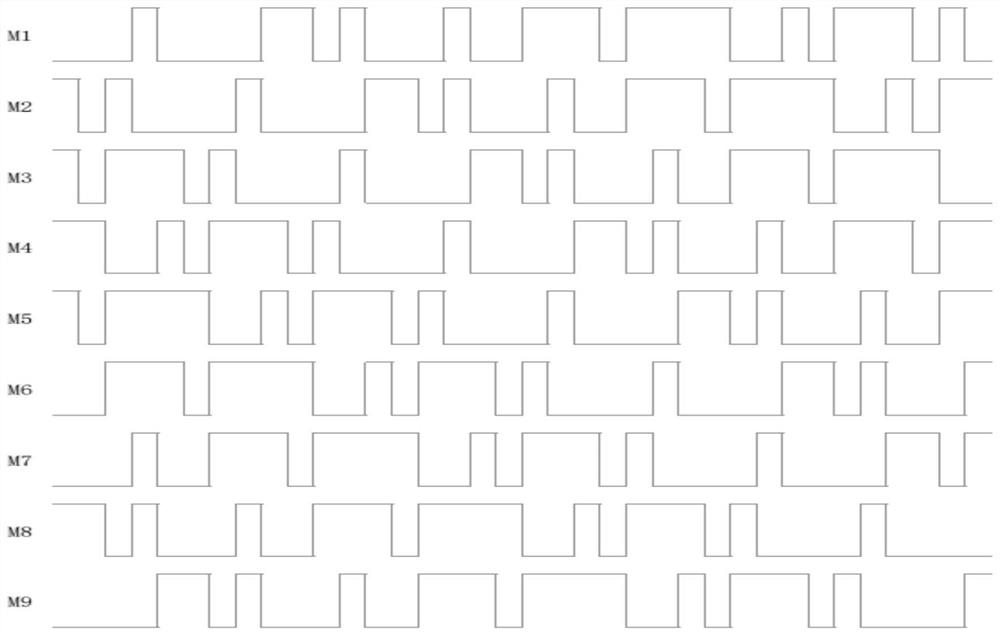Dual stimulation method of visual evoked brain-computer interface based on coded modulation
A visual induction, coding modulation technology, applied in the field of biomedical engineering brain-computer interface, can solve problems such as difficulty in meeting the practical requirements of brain-computer interface, reducing stimulation period, and long brain-computer interface window period
- Summary
- Abstract
- Description
- Claims
- Application Information
AI Technical Summary
Problems solved by technology
Method used
Image
Examples
Embodiment
[0054] 1) There are 18 stimulation targets on the stimulation interface used in this example, arranged in 3 rows and 6 columns; among them, 9 targets in 3 rows and 3 columns on the left are flashing stimuli, and 9 targets in 3 rows and 3 columns on the right are sliding stimuli. Stimulus targets are numbered 1 to 18 from top to bottom and left to right. All stimuli are modulated by a binary code. When the binary code is 1, the stimulus picture of the flashing stimulus appears, and the stimulus picture of the sliding stimulus slides; when the binary code is 0, the stimulus picture of the flashing stimulus disappears, and the stimulus picture of the sliding stimulus does not move . The 36-bit binary code conducts a stimulus as a single stimulus, and the duration of a single stimulus is 3 seconds. One single stimulus is defined as a "repeat", and there is a rest period of 1 second between "repetitions", defining 18 A "repeat" is a "repeat group".
[0055] 2) The experiment is d...
PUM
 Login to View More
Login to View More Abstract
Description
Claims
Application Information
 Login to View More
Login to View More - Generate Ideas
- Intellectual Property
- Life Sciences
- Materials
- Tech Scout
- Unparalleled Data Quality
- Higher Quality Content
- 60% Fewer Hallucinations
Browse by: Latest US Patents, China's latest patents, Technical Efficacy Thesaurus, Application Domain, Technology Topic, Popular Technical Reports.
© 2025 PatSnap. All rights reserved.Legal|Privacy policy|Modern Slavery Act Transparency Statement|Sitemap|About US| Contact US: help@patsnap.com



